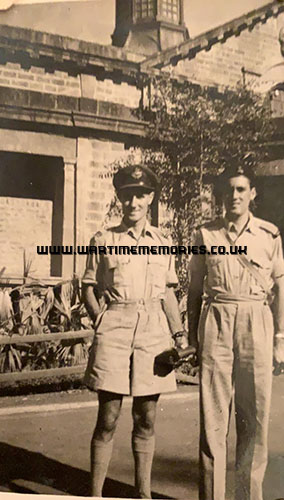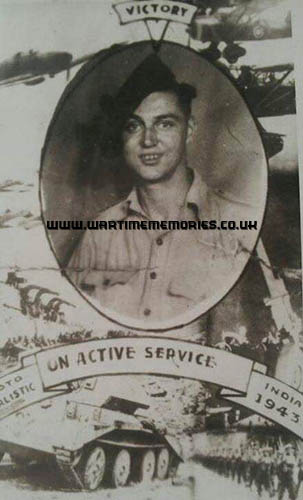|
|
|
Battle of Admin Box
The Battle of the Admin Box was a WW2 military engagement in Burma involving Japanese infantry units and Allied forces comprising British and Indian units that took place from 5th to 23rd of February 1944. The action occurred in the town of Sinzweya in the Burmese province of Arakan, which lies along the Bay of Bengal. The curious name of this battle (also called the Battle of Sinzweya) derived from the nickname given by Allied soldiers to a clearing (1,200 yards in diameter) in Sinzweya that was used as an administrative supply depot and staging area for local Allied operations and was the focal point of the battle.
The Japanese had been advancing north through Arakan intending to take the port of Chittagong in India (now in southern Bangladesh), which served as a main source of supply for Allied forces in the region. The Allies had also established some new airfields in the Chittagong area from which to launch air attacks against the Japanese and to defend against Japanese air attacks along the Burma-India border. As a pre-emptive strike, the Indian XV Corps of the British Fourteenth Army attacked southward into Arakan and down into the hilly Mayu Peninsula, capturing the port of Maungdaw on 9 January 1944. Continuing to advance slowly during January, the next Allied objective was to seize control of railroad tunnels running through the Mayu Range in order to interdict Japanese troop movements by rail. For this purpose, the 5th and 7th Indian Divisions moved into positions south of Sinzweya.
On 5th of February, using infiltration tactics that had served Japanese ground forces so well in Southeast Asia, the Japanese 55th Infantry Division counter-attacked by percolating through the thinly deployed 7th Indian Division, moving north, crossing the Mayu Range, and attacking Sinzweya, which now lay behind the 7th Division’s line. The Japanese objective was to capture the supplies and equipment held in the so-called Admin Box, which was only lightly defended by headquarters troops and an anti-aircraft/tank regiment. Moving quickly, the XV Corps commander reinforced the Admin Box’s defenders with several additional infantry and artillery units. Crucially, the reinforcements also included two tank squadrons.
On the ground, the battle at the Admin Box was intense, costly, and often fought at close quarters. However, the Allies had succeeded in gaining air superiority in the region through its Chittagong airfields, and were able to re-supply the Admin Box defenders through air-drops of rations and ammunition. In contrast, the Japanese were unable to re-supply and had long since run out of provisions. Their troops were starving. They had no more ammunition for their mountain guns and, lacking armored vehicles themselves, were thus unable to counteract the Allies’ defensive use of tanks at the Admin Box. Despite inflicting heavy casualties and briefly capturing a portion of the defensive perimeter, they were unable to break through and overrun the defenders. By 22 February, the Japanese 112th Infantry Regiment, their main unit during the action, had become drastically reduced in size, having lost over 80% of its strength through a combination of combat casualties, disease, and starvation, and could no longer press the attack. On 24 February, the Japanese retreated from Sinzweya. Two days later, upon arrival of an Allied relief force, they ceased offensive operations in the area altogether.
The action at the Admin Box was significant for being the first time during the Burma Campaign that Allied forces were able to contain and defeat a major Japanese thrust. The victory provided the Allies with momentum that was to carry over into the battles of Kohima and Imphal a few months later, battles which stopped the Japanese advance against India and finally turned the tide of the conflict in Southeast Asia in the Allies' favour.
Allied units directly participating in the action at the Admin Box included:
- XV Corps (Indian)
- 25th Light AA/Anti Tank Regiment, Royal Artillery
- 2nd Battalion, West Yorkshire Regiment
- 25th Dragoons, British Army
- 8th (Belfast) Heavy Anti Aircraft Regiment, Royal Artillery
- 6th Medium Regiment, Royal Artillery
- 9th Indian Brigade (5th Indian Division)
- 4th Battalion, 8th Gurkha Rifles (89th Indian Brigade, 7th Indian Division)
- 24th Mountain Artillery Regiment, Indian Army
7th January 1944 New aircraft
5th February 1944 Arakan Offensive
5th February 1944 Outnumbered
6th February 1944 All stations on alert
8th February 1944 Supplies Delivered
9th February 1944 Heel Trap deployed successfully
9th February 1944 In Action
9th February 1944 Operation over Burma
10th February 1944 Battle of the Admin Box
10th February 1944 Supply drop in the Arakan
11th February 1944 Tanks Lost
11th February 1944 Supply drops
12th February 1944 No enemy aircraft to be seen
13th February 1944 3 Groups of Raiders Intercepted
13th February 1944 Supply drops
14th February 1944 Maximum effort
16th February 1944 Day and night supply drops
17th February 1944 Damaged by ground fire
19th February 1944 Supply drops
16-20th February 1944 Japanese airforce kept at bay
21st February 1944 Air dominance secured
21st February 1944 Two sorties
22nd February 1944 24 sorties
23rd February 1944 24 sorties again
25th February 1944 30 supply drops
27th February 1944 Glider towing practice
28th February 1944 Supplies to Arakan
3rd March 1944 Congratulations from Mountbatten
If you can provide any additional information, please add it here.
|
Those known to have fought in Battle of Admin Box during the Second World War 1939-1945. - Balmer Henry. Pte. (d.5th Jul 1944)
- Miles Eric Talbot Shakespear. Lt.
- Richardson Norman. Pte. (d.23rd Apr 1944)
The names on this list have been submitted by relatives, friends, neighbours and others who wish to remember them, if you have any names to add or any recollections or photos of those listed,
please
Add a Name to this List
|
|
|
The Wartime Memories Project is the original WW1 and WW2 commemoration website.
Announcements
- The Wartime Memories Project has been running for 24 years. If you would like to support us, a donation, no matter how small, would be much appreciated, annually we need to raise enough funds to pay for our web hosting and admin or this site will vanish from the web.
- 27th April 2024 - Please note we currently have a huge backlog of submitted material, our volunteers are working through this as quickly as possible and all names, stories and photos will be added to the site. If you have already submitted a story to the site and your UID reference number is higher than 264001 your information is still in the queue, please do not resubmit, we are working through them as quickly as possible.
- Looking for help with Family History Research?
Please read our Family History FAQ's
- The free to access section of The Wartime Memories Project website is run by volunteers and funded by donations from our visitors. If the information here has been helpful or you have enjoyed reaching the stories please conside making a donation, no matter how small, would be much appreciated, annually we need to raise enough funds to pay for our web hosting or this site will vanish from the web.
If you enjoy this site
please consider making a donation.
Want to find out more about your relative's service? Want to know what life was like during the War? Our
Library contains an ever growing number diary entries, personal letters and other documents, most transcribed into plain text. |
|
We are now on Facebook. Like this page to receive our updates.
If you have a general question please post it on our Facebook page.
Wanted: Digital copies of Group photographs, Scrapbooks, Autograph books, photo albums, newspaper clippings, letters, postcards and ephemera relating to WW2. We would like to obtain digital copies of any documents or photographs relating to WW2 you may have at home. If you have any unwanted
photographs, documents or items from the First or Second World War, please do not destroy them.
The Wartime Memories Project will give them a good home and ensure that they are used for educational purposes. Please get in touch for the postal address, do not sent them to our PO Box as packages are not accepted.
World War 1 One ww1 wwII second 1939 1945 battalion
Did you know? We also have a section on The Great War. and a
Timecapsule to preserve stories from other conflicts for future generations.
|
|
Want to know more about Battle of Admin Box? There are:28 items tagged Battle of Admin Box available in our Library There are:28 items tagged Battle of Admin Box available in our Library 
These include information on officers, regimental histories, letters, diary entries, personal accounts and information about actions during the Second World War. |
|
Lt. Eric Talbot Shakespear Miles 4 Troop, B Squadron 25th Dragoons  Eric Miles was a volunteer from Argentina. He joined the 25th Dragoons and was the troop leader of three M3 Lee tanks in the Battle of The Admin Box in February 1944. His troop of Lees of B Squadron provided support and covering fire to the West Yorks in recapturing the main dressing station on the 9th February after it was attacked by Japanese and JIF forces, who savagely murdered thirty-one patients and four doctors during the night of 7th of February 1944.
On 11th of February, a tank of Lt. Miles's troop was hit above the hatch of the 75mm loader's position, which ignited the cordite laid out for firing and fatally burnt the crew. Whilst attempting to tow out the disabled tank, Lt. Miles's tank caught fire and exploded just after the crew had bailed out. One of its crew, John Monger, was awarded the MM for his part in securing the tow. Following the relief of the Admin Box on 24th of February, 5,000 dead Japanese were counted and perhaps more unaccounted for. It was the first defeat of the Japanese in Burma. Afterwards, the 25th Dragoons converted to Shermans and prepared for an amphibious attack on Malaysia in DD Shermans with rubber skirts, but the attack never happened.
Lt. Miles was released from service on 21 October 1946 and returned to England, where no one was interested in The Forgotten Army. Afterwards he returned to Argentina, where he found a fascist government in power and discovered that all the jobs had long been taken by those who had stayed behind.
|
Pte. Henry Balmer 2nd Btn. Kings Own Scottish Borderers (d.5th Jul 1944)  Harry Balmer enlisted on 6th of August 1942 and was allocated directly to the KOSB for basic and infantry training. He arrived in India in July 1943, and after specific jungle warfare training his unit was deployed to the Arakan region of northwest Burma. He saw action at Abel and the Admin Box, receiving field promotions to Lance Corporal then Acting Corporal.
His 7th (Indian) Division was then flown in to reinforce the garrison at Imphal, Manipur, India. Forcing the Japanese to retreat, his unit fought northwards towards Kohima, famously being led into the attack on Kanglatongbi Ridge by two of the battalion pipers.
Following the success of this attack, the KOSB trekked east across country, jungle, paddy fields, and steep mountain ridges, all in heavy monsoon. They arrived below the retreating Japanese stronghold of Uhkrul. Following two days of repelled attacks in which Harry was wounded, the Borderers entered the village virtually unchallenged on the third day, the Japanese having withdrawn overnight. Harry was promoted to 'War Substantive' Corporal during this action.
On 5th July 1944, Harry died from his wounds and was buried in the village. His remains were transferred to Imphal Military Cemetery in December 1944, where, under army regulations, he resumed his rank of Private, the War Substantive element coming into play.
RIP Uncle Harry.
|
Recomended Reading.Available at discounted prices.
|
|
|







